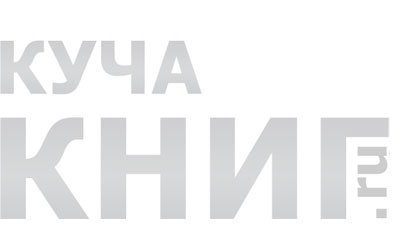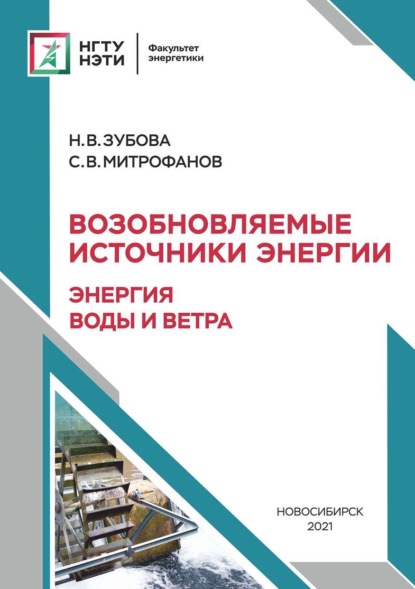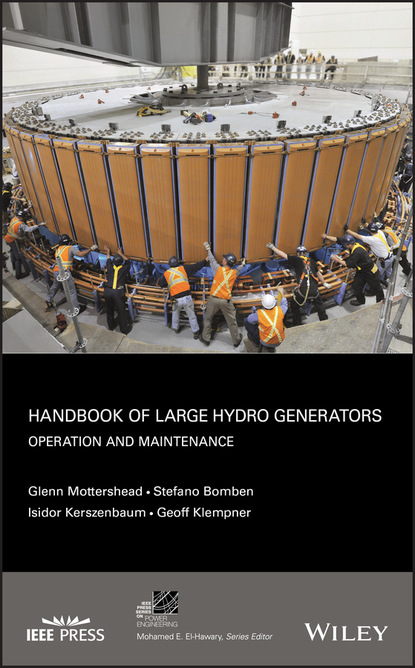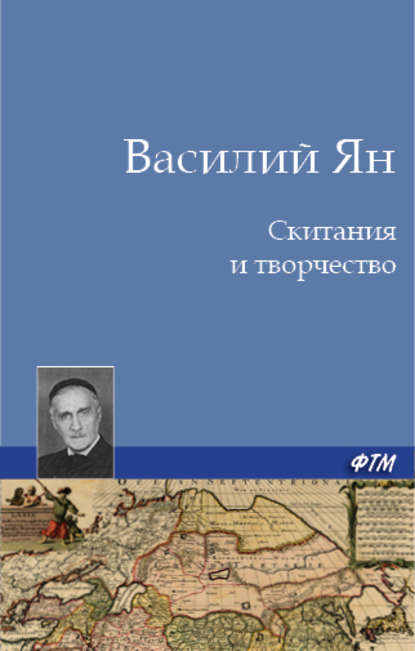Поиск:
Войти
Гидроэнергетика
Приведены результаты исследований, проведенных авторами монографии и посвященных развитию методов, м…
Приведены результаты исследований, проведенных авторами монографии и посвященных развитию методов, моделей и методик при планировании режимов электроэнергетических систем, содержащих гидроэлектростанции.
Конспект лекций направлен на формирование у обучающихся знаний, касающихся основных методов и способ…
Конспект лекций направлен на формирование у обучающихся знаний, касающихся основных методов и способов преобразования энергии, использования энергетических ресурсов; технологий производства энергии на тепловых, атомных, гидравлических электростанциях, энергетических установках, использующих нетрадиционные или возобновляемые источники энергии; общих вопросов энергоснабжения и энергопотребления.
Конспект лекций предназначен для бакалавров, обучающихся по направлению подготовки 13.03.02 «Электроэнергетика и электротехника». Также может быть полезен для студентов других специальностей и направлений подготовки, интересующихся вопросами энергетики.
Изложен материал по темам, которые необходимо изучить по этой дисциплине, разработаны расчетные зада…
Изложен материал по темам, которые необходимо изучить по этой дисциплине, разработаны расчетные задания и составлены контрольные вопросы. Приведены исходные и справочные данные и представлены примеры решения рассматриваемых задач.
Для студентов направления «Электроэнергетика и электротехника».
Рассмотрено и одобрено на заседании кафедры «Электрификация производства и быта».
2-е издание, переработанное
Добавлено
Год выхода: 2020
Язык: Русский
Дисциплина «Гидроэнергетика» направлена на формирование профессиональной подготовки студентов, магис…
Дисциплина «Гидроэнергетика» направлена на формирование профессиональной подготовки студентов, магистров и аспирантов по направлению 13.04.02 «Электроэнергетика и электротехника» в соответствии с Федеральным государственным образовательным стандартом высшего профессионального образования.
Учебное пособие предназначено для изучения методов и принципов водно-энергетических расчетов оптимальных режимов работы гидроэлектростанции в составе электроэнергетической системы.
В пособии рассмотрены варианты конструкций, а также режимы работы возобновляемых источников энергии,…
В пособии рассмотрены варианты конструкций, а также режимы работы возобновляемых источников энергии, использующих в качестве энергетического ресурса потоки ветра и энергию движения водяных масс.
Настоящее пособие предназначено для студентов очного и заочного отделений факультета энергетики, обучающихся по направлению 13.03.02 «Электроэнергетика и электротехника».
В учебно-методическом пособии рассмотрены принципы проектирования автономной ветродизельной станции …
В учебно-методическом пособии рассмотрены принципы проектирования автономной ветродизельной станции для электроснабжения населенных пунктов.
Пособие предназначено для студентов очного и заочного отделения факультета энергетики, обучающихся по направлению 13.03.02 «Электроэнергетика и электротехника».
Добавлено
Год выхода: 2022
Язык: Русский
В монографии рассмотрен ситуационный подход к управлению нормальными режимами работы гидроэлектроста…
В монографии рассмотрен ситуационный подход к управлению нормальными режимами работы гидроэлектростанций. Отличительными особенностями такого процесса управления являются многокритериальность, адаптивность, необходимость принятия решений в условиях неопределенности. В качестве методологии построения систем ситуационного управления предложена теория возможностей – математический инструмент, позволяющий интерпретировать неточную, расплывчатую информацию об объекте.
Процесс принятия решений рассматривается как крайне важный и ответственный этап управления, нуждающийся в дополнительной информационной поддержке. Для решения этой задачи, а также задачи многокритериальной оптимизации состава работающих агрегатов были сформулированы основные принципы подсистем СППР и РУСА.
Предложенные в работе математические модели и алгоритмы ориентированы на ГЭС разного уровня мощности и служат идеологической основой для реализации современных человеко-машинных систем управления.
[b]A deep dive into wireless energy transfer technologies for IoT networks[/b]
In [i]Wireless Energy…
[b]A deep dive into wireless energy transfer technologies for IoT networks[/b]
In [i]Wireless Energy Transfer: Towards Sustainable Zero-Energy IoT Networks[/i], distinguished researchers Onel L. A. López and Hirley Alves deliver a robust discussion of massive wireless energy transfer and zero-energy, low-cost, Internet of Things networks. Moving beyond the basic theoretical background of the subject, the authors offer a deep analysis of the scenarios and requirements of wireless energy transfer.
The book details novel powering schemes recently proposed to face the challenging requirements of the future Internet of Things, as well as a comprehensive review of sustainable IoT wireless networks.
[i]Wireless Energy Transfer[/i] explains why novel energy efficient solutions will be needed to address the sheer volume of devices currently forecasted to be used in the near future. It explores the challenges technologists and users will face as well as proposed solutions and future research directions.
The authors also discuss:
Thorough introductions to wireless energy transfer, including energy harvesting sources, radio frequency energy harvesting circuits, efficiency models, and architectures for wireless energy transfer powered IoT networks Comprehensive explorations of ambient radio frequency energy harvesting, including measurement campaigns, energy harvesting hardware prototypes, and performance analysis based on stochastic geometry Practical discussions of efficient schemes for massive wireless energy transfer, including energy beamforming, multi-antenna techniques, and distributed antenna systems Perfect for students and researchers in signal processing, communications, networking, and information theory, [i]Wireless Energy Transfer: Towards Sustainable Zero-Energy IoT Networks[/i] will also earn a place in the libraries of students and practitioners in the fields of communication hardware and transceiver design.
[b]Power Magnetic Devices[/b] [b]Discover a cutting-edge discussion of the design process for power …
[b]Power Magnetic Devices[/b] [b]Discover a cutting-edge discussion of the design process for power magnetic devices [/b] In the newly revised second edition of [i]Power Magnetic Devices: A Multi-Objective Design Approach[/i], accomplished engineer and author Dr. Scott D. Sudhoff delivers a thorough exploration of the design principles of power magnetic devices such as inductors, transformers, and rotating electric machinery using a systematic and consistent framework. The book includes new chapters on converter and inverter magnetic components (including three-phase and common-mode inductors) and elaborates on characteristics of power electronics that are required knowledge in magnetics. New chapters on parasitic capacitance and finite element analysis have also been incorporated into the new edition. The work further includes: A thorough introduction to evolutionary computing-based optimization and magnetic analysis techniques Discussions of force and torque production, electromagnet design, and rotating electric machine design Full chapters on high-frequency effects such as skin- and proximity-effect losses, core losses and their characterization, thermal analysis, and parasitic capacitance Treatments of dc-dc converter design, as well as three-phase and common-mode inductor design for inverters An extensive open-source MATLAB code base, PowerPoint slides, and a solutions manual Perfect for practicing power engineers and designers, [i]Power Magnetic Devices[/i] will serve as an excellent textbook for advanced undergraduate and graduate courses in electromechanical and electromagnetic design.
[b]This book offers comprehensive coverage of the operation and maintenance of large hydro generator…
[b]This book offers comprehensive coverage of the operation and maintenance of large hydro generators[/b]
This book is a practical handbook for engineers and maintenance staff responsible for the upkeep of large salient-pole hydro generators used in electric power plants. Focusing on the physics and maintenance of large vertical salient pole generators, it offers readers real-world experience, problem description, and solutions, while teaching them about the design, modernization, inspections, maintenance, and operation of salient pole machines.
[i]Handbook of Large Hydro Generators: Operation and Maintenance[/i] provides an introduction to the principles of operation of synchronous machines. It then covers design and construction, auxiliary systems, operation and control, and monitoring and diagnostics of generators. Generator protection, inspection practices and methodology and auxiliaries inspections are also examined. The final two chapters are dedicated to maintenance and testing, and maintenance philosophies, upgrades, and uprates. The handbook includes over 420 color photos and 180 illustrations, forms, and tables to complement the topics covered in the chapters.
Written with a machine operator and inspector in mind,[i] Handbook of Large Hydro Generators: Operation and Maintenance[/i]:
Instructs readers how to perform complete machine inspections, understand what they are doing, and find solutions for any problems encountered Includes real-life, practical, field experiences so that readers can familiarize themselves with aspects of machine operation, maintenance, and solutions to common problems Benefits experienced and new power plant operators, generator design engineers and operations engineers. Is authored by industry experts who participated in the writing and maintenance of IEEE standards (IEEE C50.12 and C50.13) on the subject [i]Handbook of Large Hydro Generators: Operation and Maintenance[/i] is an ideal resource for scientists and engineers whose research interest is in electromagnetic and energy conversion. It is also an excellent book for senior undergraduate and graduate students majoring in energy generation, and generator operation and maintenance.
Power systems worldwide are going through a paradigm shift from centralized generation to distribute…
Power systems worldwide are going through a paradigm shift from centralized generation to distributed generation. This book presents the SYNDEM (i.e., synchronized and democratized) grid architecture and its technical routes to harmonize the integration of renewable energy sources, electric vehicles, storage systems, and flexible loads, with the synchronization mechanism of synchronous machines, to enable autonomous operation of power systems, and to promote energy freedom. This is <i>a game changer for the grid. It is the sort of breakthrough – like the touch screen in smart phones – that helps to push an industry from one era to the next,</i> as reported by Keith Schneider, a New York Times correspondent since 1982. This book contains an introductory chapter and additional 24 chapters in five parts: Theoretical Framework, First-Generation VSM (virtual synchronous machines), Second-Generation VSM, Third-Generation VSM, and Case Studies. Most of the chapters include experimental results. <br /><br />As the first book of its kind for power electronics-enabled autonomous power systems, it <br /><br />• introduces a holistic architecture applicable to both large and small power systems, including aircraft power systems, ship power systems, microgrids, and supergrids <br />• provides latest research to address the unprecedented challenges faced by power systems and to enhance grid stability, reliability, security, resiliency, and sustainability <br />• demonstrates how future power systems achieve harmonious interaction, prevent local faults from cascading into wide-area blackouts, and operate autonomously with minimized cyber-attacks <br />• highlights the significance of the SYNDEM concept for power systems and beyond <br /><br /><i>Power Electronics-Enabled Autonomous Power Systems</i> is an excellent book for researchers, engineers, and students involved in energy and power systems, electrical and control engineering, and power electronics. The SYNDEM theoretical framework chapter is also suitable for policy makers, legislators, entrepreneurs, commissioners of utility commissions, energy and environmental agency staff, utility personnel, investors, consultants, and attorneys.
[b]The updated third edition of the classic book that provides an introduction to electric machines …
[b]The updated third edition of the classic book that provides an introduction to electric machines and their emerging applications[/b]
The thoroughly revised and updated third edition of [i]Electromechanical Motion Devices [/i]contains an introduction to modern electromechanical devices and offers an understanding of the uses of electric machines in emerging applications such as in hybrid and electric vehicles. The authors—noted experts on the topic—put the focus on modern electric drive applications. The book includes basic theory, illustrative examples, and contains helpful practice problems designed to enhance comprehension.
The text offers information on Tesla's rotating magnetic field, which is the foundation of reference frame theory and explores in detail the reference frame theory. The authors also review permanent-magnet ac, synchronous, and induction machines. In each chapter, the material is arranged so that if steady-state operation is the main concern, the reference frame derivation can be de-emphasized and focus placed on the steady state equations that are similar in form for all machines. This important new edition:
• Features an expanded section on Power Electronics
• Covers Tesla's rotating magnetic field
• Contains information on the emerging applications of electric machines, and especially, modern electric drive applications
• Includes online animations and a solutions manual for instructors
Written for electrical engineering students and engineers working in the utility or automotive industry, [i]Electromechanical Motion Devices [/i]offers an invaluable book for students and professionals interested in modern machine theory and applications.
[b]A comprehensive guide to approaches to decoding, synthesizing and modeling pulse width modulation…
[b]A comprehensive guide to approaches to decoding, synthesizing and modeling pulse width modulation (PWM) converters[/b]
[i]Origin of Power Converters[/i] explores the original converter and provides a systematic examination of the development and modeling of power converters based on decoding and synthesizing approaches. The authors—noted experts on the topic—present an introduction to the origins of the converter and detail the fundamentals related to power the converter’s evolution. They cover a range of converter synthesis approaches, synthesis of multi-stage/multi-level converters, extension of hard-switching converters to soft-switching ones, and determination of switch-voltage stresses in the converters.
In later chapters, this comprehensive resource reviews conventional two-port network theory and the state-space averaged (SSA) modeling approach, from which systematic modeling approaches are based on the graft switch technique. In addition, the book reviews the converter layer scheme and some fundamental circuit theories. This important book:
• Contains a review of several typical transfer codes, such as step-down, step-up, step-up&-down, and ± step-up&-down
• Describes the syntheses of pulse width modulation (PWM) converters such as voltage-fed z-source, current-fed z-source, quasi z-source, switched capacitor, and switched inductor converters
• Presents two application examples based on previously proposed modeling approaches
Written for academic researchers, graduate students, and seniors in power electronics, [i]Origin of Power Converters[/i] provides a comprehensive understanding of the evolution of the converter and its applications.
[b]This new edition of the definitive arc flash reference guide, fully updated to align with the IEE…
[b]This new edition of the definitive arc flash reference guide, fully updated to align with the IEEE's updated hazard calculations[/b]
An arc flash, an electrical breakdown of the resistance of air resulting in an electric arc, can cause substantial damage, fire, injury, or loss of life. Professionals involved in the design, operation, or maintenance of electric power systems require thorough and up-to-date knowledge of arc flash safety and prevention methods. [i]Arc Flash Hazard Analysis and Mitigation[/i] is the most comprehensive reference guide available on all aspects of arc flash hazard calculations, protective current technologies, and worker safety in electrical environments. Detailed chapters cover protective relaying, unit protection systems, arc-resistant equipment, arc flash analyses in DC systems, and many more critical topics.
Now in its second edition, this industry-standard resource contains fully revised material throughout, including a new chapter on calculation procedures conforming to the latest [i]IEEE Guide 1584[/i]. Updated methodology and equations are complemented by new practical examples and case studies. Expanded topics include risk assessment, electrode configuration, the impact of system grounding, electrical safety in workplaces, and short-circuit currents. Written by a leading authority with more than three decades' experience conducting power system analyses, this invaluable guide:
Provides the latest methodologies for flash arc hazard analysis as well practical mitigation techniques, fully aligned with the updated [i]IEEE Guide for Performing Arc-Flash Hazard Calculations[/i] Explores an inclusive range of current technologies and strategies for arc flash mitigation Covers calculations of short-circuits, protective relaying, and varied electrical system configurations in industrial power systems Addresses differential relays, arc flash sensing relays, protective relaying coordination, current transformer operation and saturation, and more Includes review questions and references at the end of each chapter Part of the market-leading [i]IEEE Series on Power Engineering,[/i] the second edition of Arc Flash Hazard Analysis and Mitigation remains essential reading for all electrical engineers and consulting engineers.
Добавлено
Год выхода:
Язык: Английский
[b]A great resource for beginner students and professionals alike[/b]
[i]Introduction to Energy, Re…
[b]A great resource for beginner students and professionals alike[/b]
[i]Introduction to Energy, Renewable Energy and Electrical Engineering: Essentials for Engineering Science (STEM) Professionals and Students[/i] brings together the fundamentals of Carnot’s laws of thermodynamics, Coulomb’s law, electric circuit theory, and semiconductor technology. The book is the perfect introduction to energy-related fields for undergraduates and non-electrical engineering students and professionals with knowledge of Calculus III. Its unique combination of foundational concepts and advanced applications delivered with focused examples serves to leave the reader with a practical and comprehensive overview of the subject.
The book includes:
A combination of analytical and software solutions in order to relate aspects of electric circuits at an accessible level A thorough description of compensation of flux weakening (CFW) applied to inverter-fed, variable-speed drives not seen anywhere else in the literature Numerous application examples of solutions using PSPICE, Mathematica, and finite difference/finite element solutions such as detailed magnetic flux distributions Manufacturing of electric energy in power systems with integrated renewable energy sources where three-phase inverter supply energy to interconnected, smart power systems Connecting the energy-related technology and application discussions with urgent issues of energy conservation and renewable energy—such as photovoltaics and ground-water heat pump resulting in a zero-emissions dwelling—[i]Introduction to Energy, Renewable Energy, and Electrical Engineering[/i] crafts a truly modern and relevant approach to its subject matter.
Coal accounts for approximately one quarter of world energy consumption and of the coal produced wor…
Coal accounts for approximately one quarter of world energy consumption and of the coal produced worldwide approximately 65% is shipped to electricity producers and 33% to industrial consumers, with most of the remainder going to consumers in the residential and commercial sectors. The total share of total world energy consumption by coal is expected to increase to almost 30% in 2035.
This book describes the challenges and steps by which electricity is produced form coal and deals with the challenges for removing the environmental objections to the use of coal in future power plants. New technologies are described that could virtually eliminate the sulfur, nitrogen, and mercury pollutants that are released when coal is burned for electricity generation. In addition, technologies for the capture greenhouse gases emitted from coal-fired power plants are described and the means of preventing such emissions from contributing to global warming concerns.
Written by one of the world’s leading energy experts, this volume is a must-have for any engineer, scientist, or student working in this field, providing a valuable reference and guide in a quickly changing field.
Популярные книги




























